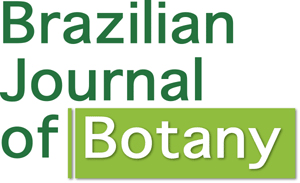Leguminosae está representada na Caatinga por 293 espécies, das quais oito foram estudadas quanto à polinização e/ou sistema reprodutivo. Foram analisados a biologia floral, os polinizadores e o sistema reprodutivo de Caesalpinia pyramidalis Tul. Houve produção de 5,7 ± 0,9 óvulos/flor, 66,9 ± 47,8 flores e 2,1 ± 1,2 frutos por inflorescência e 2,88 ± 1,44 sementes/fruto. O volume de néctar foi cerca de 1,0 µL durante o primeiro dia da flor, 0,5 µL no segundo dia, não havendo produção no terceiro dia. C. pyramidalis é auto-incompatível, com tubos polínicos oriundos de autopolinização manual crescendo até o saco embrionário. Espécies de Xylocopa e Centris constituem importantes polinizadores de C. pyramidalis. Durante as visitas, as abelhas promovem principalmente geitonogamia, a qual favorece a perda de frutos e leva à baixa razão fruto/flor (0,03). Entretanto, a razão semente/óvulo relativamente elevada (0,50), demonstra maior investimento em sementes provenientes de polinizações cruzadas, reduzindo os efeitos da geitonogamia.
auto-incompatibilidade de ação tardia; Caatinga; Centris; sucesso reprodutivo pré-emergente; Xylocopa








